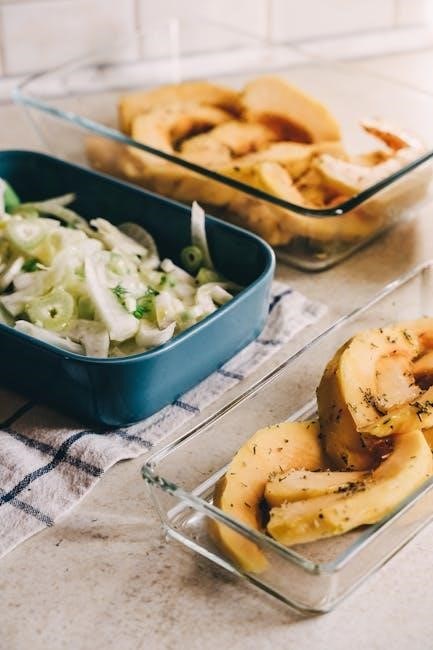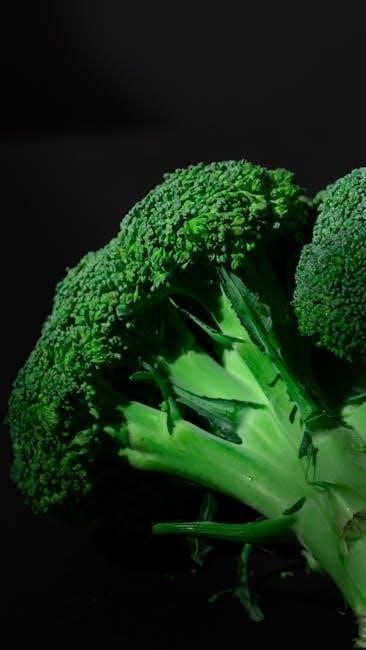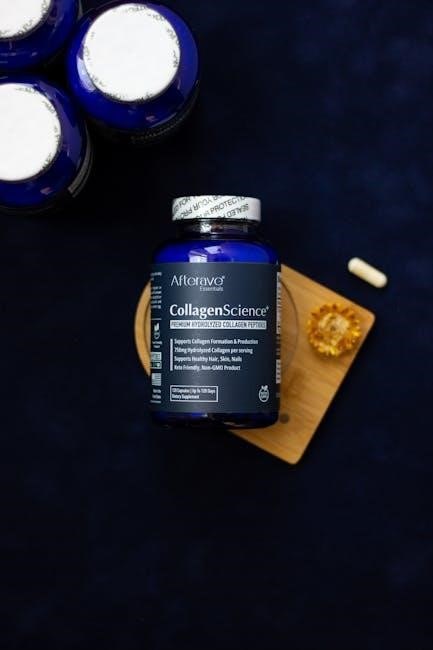
Anti-Reflux Diet PDF: A Comprehensive Guide
Embark on a journey to digestive wellness with our comprehensive guide to the anti-reflux diet. This resource provides essential information about managing acid reflux and GERD through dietary modifications. Discover the power of food in alleviating discomfort and promoting a healthier, happier you, starting today!
Understanding Gastroesophageal Reflux Disease (GERD)
Gastroesophageal Reflux Disease, commonly known as GERD, is a chronic digestive disorder characterized by the frequent backflow of stomach acid into the esophagus. This reflux occurs when the lower esophageal sphincter (LES), a muscle at the bottom of the esophagus, malfunctions, allowing stomach contents to escape.
Normally, the LES opens to allow food to pass into the stomach and closes to prevent acid from flowing back up. However, in individuals with GERD, the LES may weaken or relax inappropriately, leading to acid reflux.
The primary symptom of GERD is heartburn, a burning sensation in the chest that often occurs after eating or at night. Other symptoms may include regurgitation, difficulty swallowing, chronic cough, sore throat, and even asthma-like symptoms. Understanding the mechanisms behind GERD is crucial for managing the condition effectively.
Factors contributing to GERD include obesity, hiatal hernia, pregnancy, smoking, and certain medications. Diagnosing GERD typically involves a physical examination, symptom evaluation, and potentially diagnostic tests such as endoscopy or esophageal pH monitoring. Early diagnosis and management are essential to prevent complications such as esophagitis and Barrett’s esophagus.
The Role of Diet in Managing Acid Reflux
Diet plays a pivotal role in managing acid reflux and alleviating the symptoms of GERD. Certain foods and beverages can trigger or worsen acid reflux by relaxing the lower esophageal sphincter (LES), increasing stomach acid production, or irritating the esophagus.
By making strategic dietary modifications, individuals can significantly reduce the frequency and severity of acid reflux episodes. An anti-reflux diet focuses on identifying and eliminating trigger foods while incorporating foods that promote digestive health and reduce acid production.
Foods high in fat, such as fried foods, fatty meats, and processed snacks, can delay stomach emptying and increase acid production, exacerbating reflux symptoms. Similarly, acidic foods like citrus fruits, tomatoes, and vinegar can irritate the esophagus and trigger heartburn.
Carbonated beverages, alcohol, caffeine, and chocolate can also relax the LES, allowing stomach acid to flow back into the esophagus. Conversely, certain foods like lean proteins, non-citrus fruits, vegetables, and whole grains can help soothe the digestive system and reduce acid reflux.
Adopting an anti-reflux diet involves mindful food choices, portion control, and meal timing to optimize digestive function and minimize acid reflux symptoms. This dietary approach empowers individuals to take control of their GERD and improve their overall quality of life.
Foods to Avoid on an Anti-Reflux Diet
Navigating an anti-reflux diet requires understanding which foods can exacerbate symptoms. High-fat foods are primary culprits. Fried items, fatty cuts of meat, and creamy sauces delay stomach emptying, increasing the risk of acid reflux. Processed snacks, often laden with unhealthy fats, should also be limited.
Acidic foods pose another challenge. Citrus fruits like oranges, grapefruits, lemons, and limes can irritate the esophagus. Tomatoes and tomato-based products, including sauces and ketchup, are also best avoided. Vinegar, a common ingredient in salad dressings and marinades, can have a similar effect.
Certain beverages can also trigger reflux. Carbonated drinks introduce gas into the stomach, increasing pressure and potentially forcing acid upwards. Alcohol relaxes the lower esophageal sphincter (LES), making reflux more likely. Caffeine, found in coffee, tea, and chocolate, can also weaken the LES.

Chocolate, in addition to its caffeine content, contains compounds that relax the LES. Spicy foods, while not acidic, can irritate the esophagus and trigger heartburn in some individuals.
Mint, including peppermint and spearmint, is often touted for its digestive benefits, but it can relax the LES and worsen reflux. By consciously avoiding these trigger foods, individuals can significantly reduce the frequency and severity of their acid reflux symptoms.
Foods to Include in an Anti-Reflux Diet
Building an anti-reflux diet involves incorporating foods that are gentle on the stomach and less likely to trigger acid reflux. Fiber-rich foods play a crucial role. Whole grains, such as oatmeal, brown rice, and whole-wheat bread, help absorb stomach acid and promote regular bowel movements. Non-citrus fruits like bananas, melons, apples, and pears are good choices.
Lean protein sources are essential for overall health and are well-tolerated by most individuals with acid reflux. Skinless chicken, turkey, fish, and lean cuts of beef are excellent options. Prepare these meats by baking, grilling, or steaming rather than frying.
Vegetables are a cornerstone of a healthy anti-reflux diet. Leafy greens, broccoli, green beans, and carrots are low in acid and easy to digest. Potatoes and sweet potatoes, prepared without added fats, can also be included.
Healthy fats, in moderation, are important for overall well-being. Avocado, nuts, and seeds can provide essential nutrients and support digestive health. Olive oil, used sparingly, is a good choice for cooking.
Certain beverages can also help soothe the digestive system. Water is essential for hydration and helps dilute stomach acid. Herbal teas, such as chamomile and ginger tea, have calming properties and can aid digestion. Low-fat or non-dairy milk alternatives, like almond or oat milk, may be better tolerated than cow’s milk.
By focusing on these reflux-friendly foods, you can create a balanced and nutritious diet that minimizes symptoms and promotes digestive comfort.
Sample Anti-Reflux Meal Plan
Crafting a daily meal plan can be a helpful way to manage acid reflux symptoms. Here’s a sample one-day plan incorporating reflux-friendly foods. For breakfast, consider a bowl of oatmeal with sliced bananas and a sprinkle of almonds. Pair it with a cup of chamomile tea. This provides fiber and gentle carbohydrates to start the day.
For lunch, a baked chicken breast salad with mixed greens, avocado, and a light vinaigrette dressing is a good option. Include a side of steamed green beans for added nutrients and fiber. This meal offers lean protein, healthy fats, and easily digestible vegetables.
As for dinner, try baked salmon with roasted sweet potatoes and steamed broccoli. Season the salmon with herbs like dill or parsley instead of spicy seasonings. This provides omega-3 fatty acids, complex carbohydrates, and essential vitamins.
Snacks between meals can help stabilize blood sugar levels and prevent overeating. Good choices include a small handful of almonds, a piece of melon, or a cup of non-dairy yogurt.
Remember to drink plenty of water throughout the day. Avoid eating large meals, especially close to bedtime. Adjust portion sizes to avoid feeling overly full. This sample meal plan provides a starting point for building your anti-reflux diet. Modify it based on your individual needs and preferences, always prioritizing reflux-friendly foods.
Lifestyle Changes to Support the Anti-Reflux Diet
Adopting an anti-reflux diet is a great start, but combining it with strategic lifestyle modifications can significantly improve symptom management. One crucial change is elevating the head of your bed by 6-8 inches. This can be achieved by using bed risers or placing a wedge under the mattress. This helps gravity keep stomach acid down.
Another beneficial practice is avoiding lying down immediately after meals. It’s best to wait at least 2-3 hours before reclining to allow for proper digestion. Regular physical activity is also helpful, but avoid strenuous exercises that can put pressure on your abdomen. Gentle activities like walking or yoga are preferable.

Smoking can weaken the lower esophageal sphincter, so quitting smoking is highly recommended. Maintaining a healthy weight is also important, as excess weight can increase abdominal pressure. Consider stress-reduction techniques like meditation or deep breathing exercises, as stress can exacerbate acid reflux symptoms.
Avoid wearing tight-fitting clothing that can compress your abdomen. Review medications with your doctor, as some medications can contribute to reflux. Finally, be mindful of your posture, as slouching can put pressure on your stomach. By incorporating these lifestyle changes alongside your diet, you can create a comprehensive approach to managing acid reflux.

Anti-Reflux Diet for Specific Conditions (Esophagitis, Hiatal Hernia)
While the general anti-reflux diet principles apply, specific conditions like esophagitis and hiatal hernia may necessitate tailored adjustments. Esophagitis, an inflammation of the esophagus, often requires a more cautious approach. It’s vital to avoid highly acidic foods and beverages, opting instead for softer, easily digestible options. Pureed foods and smoothies can be helpful during flare-ups.
For individuals with a hiatal hernia, where a portion of the stomach protrudes through the diaphragm, managing intra-abdominal pressure is key. Smaller, more frequent meals can prevent overfilling the stomach and exacerbating symptoms. It’s also important to avoid bending over or lifting heavy objects, as these actions can increase pressure.
Staying hydrated with water is essential for both conditions, but avoid drinking large amounts of fluids with meals, as this can distend the stomach. Probiotic-rich foods like yogurt or kefir can help support a healthy gut microbiome, which may indirectly aid in symptom management.
Consulting with a registered dietitian or healthcare professional is crucial to personalize the diet according to individual needs and the severity of the condition. They can provide guidance on specific food choices, meal planning, and potential nutrient deficiencies to ensure optimal health and well-being.
The Importance of Portion Control and Meal Timing
Beyond what you eat, how much and when you eat plays a crucial role in managing acid reflux. Portion control is essential to prevent overfilling the stomach, which can increase pressure on the lower esophageal sphincter (LES) and trigger reflux. Aim for smaller, more frequent meals throughout the day rather than large, heavy ones.
Meal timing is equally important. Avoid eating large meals close to bedtime, as lying down with a full stomach increases the likelihood of acid reflux. Ideally, finish your last meal at least 2-3 hours before going to bed to allow your stomach to empty partially.
Consider elevating the head of your bed slightly to further reduce nighttime reflux. This can be achieved by placing blocks under the bedposts or using a wedge pillow. Avoid tight-fitting clothing, especially around the waist, as it can increase abdominal pressure.

Being mindful of your eating habits, such as eating slowly and chewing food thoroughly, can also aid digestion and prevent overeating. Pay attention to your body’s signals of fullness and avoid forcing yourself to finish a meal. These simple yet effective strategies can significantly improve reflux symptoms and overall digestive comfort.
Where to Find Reliable Anti-Reflux Diet PDF Resources
Navigating the vast sea of online information can be daunting, especially when seeking reliable health advice. When searching for anti-reflux diet PDF resources, it’s crucial to prioritize credible sources to ensure accuracy and safety.
Start by exploring websites of reputable medical organizations such as the American Society for Gastrointestinal Endoscopy (ASGE). These organizations often provide evidence-based guidelines and educational materials for managing GERD and acid reflux.
Another valuable resource is your healthcare provider. They can offer personalized recommendations and point you towards trusted PDF resources tailored to your specific needs. Registered dietitians and nutritionists specializing in gastrointestinal disorders can also provide expert guidance and reliable information.
Be cautious of generic health websites or blogs that may not be vetted by medical professionals. Look for PDFs that cite scientific studies and are authored or reviewed by qualified healthcare experts. Remember, accurate information is essential for making informed decisions about your diet and managing your condition effectively. Always consult with your doctor before making significant dietary changes.